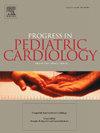Pediatric Hypertension: definitions, evaluation, and treatment
IF 0.6
Q4 PEDIATRICS
引用次数: 0
Abstract
Background
Pediatric hypertension affects 3 % to 5 % of children and adolescents between ages 1 year to 18 years and may have long-term health consequences.
Aim of review
The purpose of this article is to review pediatric hypertension, including screening, methods of blood pressure measurement, etiology, evaluation, and treatment of patients with or without end-organ damage.
Key scientific concepts of review
In children, blood pressure levels are interpreted based on age, sex, and height to avoid misclassification. Blood pressure measurements at three separate visits are required to diagnose hypertension. Routine screening begins at age 3 years, but blood pressure is measured during each health visit in patients who have body mass index ≥95 %, take medications that increase blood pressure, or have health issues that may increase the risk of developing hypertension. The auscultatory method is preferred for blood pressure measurement in the right arm. A 24-h ambulatory blood pressure monitor is used to confirm hypertension and differentiate it from white-coat or masked hypertension. Primary (essential) hypertension is multifactorial and may be associated with overweight and obesity, genetic predisposition, premature birth, low birth weight, increased sodium intake, sedentary lifestyle, and obstructive sleep apnea. Secondary hypertension may be caused by specific diseases such as kidney disease, cardiovascular disease, endocrine abnormalities, adverse events from medication, and monogenic causes. Treatment for pediatric hypertension includes nonpharmacologic and pharmacologic therapies, including diet and lifestyle modification. Children with hypertension are more likely to have hypertension in adulthood and develop targeted end-organ injury of the brain, cardiovascular system, or kidneys. It is important to accurately diagnose and treat hypertension early in childhood to avoid long-term complications.

求助全文
约1分钟内获得全文
求助全文
来源期刊

PROGRESS IN PEDIATRIC CARDIOLOGY
PEDIATRICS-
CiteScore
0.90
自引率
11.10%
发文量
69
审稿时长
75 days
期刊介绍:
Progress in Pediatric Cardiology is an international journal of review presenting information and experienced opinion of importance in the understanding and management of cardiovascular diseases in children. Each issue is prepared by one or more Guest Editors and reviews a single subject, allowing for comprehensive presentations of complex, multifaceted or rapidly changing topics of clinical and investigative interest.
 求助内容:
求助内容: 应助结果提醒方式:
应助结果提醒方式:


